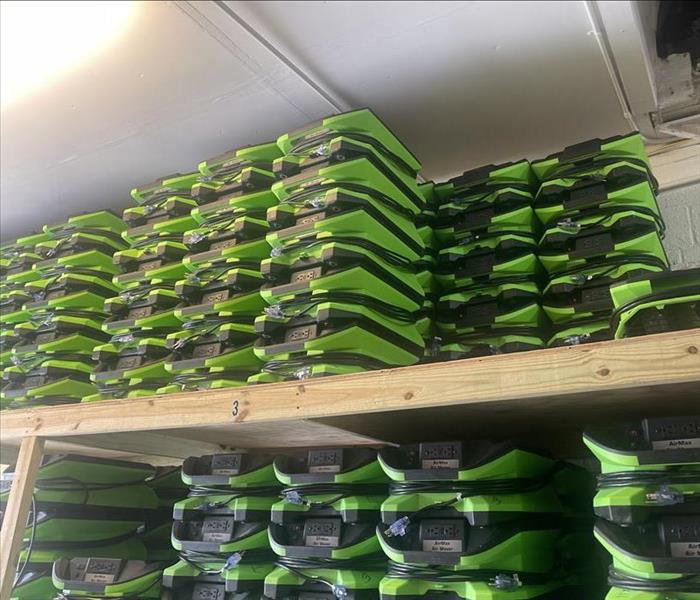Steps to Take When Your Basement Floods
10/16/2024 (Permalink)
Flooding in your basement can be a stressful and overwhelming experience. Whether caused by heavy rain, a burst pipe, or groundwater seepage, a flooded basement requires immediate attention to minimize damage and restore your home. At SERVPRO®, we understand the urgency of such situations, and we're here to guide you through the essential steps to take when your basement floods.
1. Ensure Safety First
Before doing anything else, prioritize safety. If your basement is flooded, there’s a chance that electrical hazards could be present. If you can safely access your circuit breaker, turn off the electricity to the affected area. If water levels are high or you're unsure of the situation, it’s best to avoid the basement until professionals can assess the risk. Once the electricity is off, you can safely begin addressing the situation.
2. Identify the Source of the Flooding
Understanding the source of the water is crucial to determining the appropriate course of action. Is the flooding due to external factors like heavy rainfall, or is it from an internal source such as a broken pipe or malfunctioning sump pump? Identifying the cause will help you decide whether you can stop the flow of water yourself or if you need to call in professional help immediately.
3. Remove Water and Dry Out the Area
Once it’s safe to do so, start removing the water as quickly as possible. If the flooding is minor, a wet/dry vacuum can be useful for extracting water. For larger floods, you may need to rent a pump or call in a professional water damage restoration company like SERVPRO®. After the water is removed, use fans, dehumidifiers, and open windows to begin drying out the area. The quicker you dry out your basement, the less damage your home will sustain.
4. Salvage What You Can
Not all items in your basement may be salvageable, but it’s important to act quickly to save what you can. Remove any furniture, appliances, and personal items from the waterlogged area. Items made of porous materials like wood, fabric, or paper are especially vulnerable to water damage, so prioritize moving them to a dry area. Once you’ve removed the items, assess what can be cleaned, dried, and restored, and what may need to be discarded.
5. Prevent Future Flooding
After dealing with the immediate crisis, take steps to prevent future basement flooding. Regular maintenance of your home’s drainage systems, such as clearing gutters and downspouts, can help prevent water from entering your basement. You might also consider installing a sump pump or improving your home's foundation drainage system. If you’re unsure of what’s best for your home, a consultation with a professional can provide you with tailored recommendations.
When your basement floods, quick action is essential to minimize damage and restore your home to its original condition. At SERVPRO, we are experts in water damage restoration, and we're here to help you every step of the way. If you need professional assistance, don’t hesitate to reach out to us. We're ready to make it "Like it never even happened."



 24/7 Emergency Service
24/7 Emergency Service
